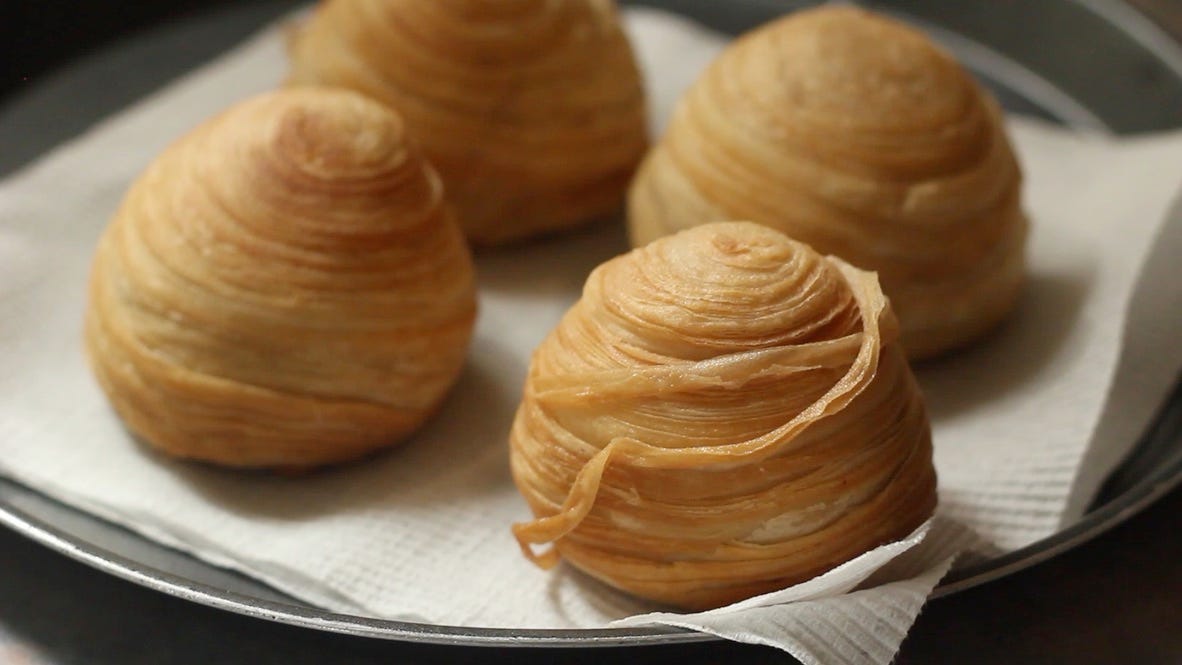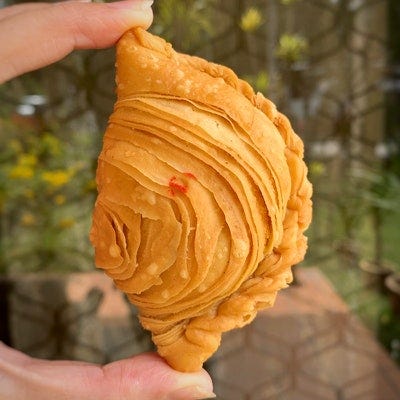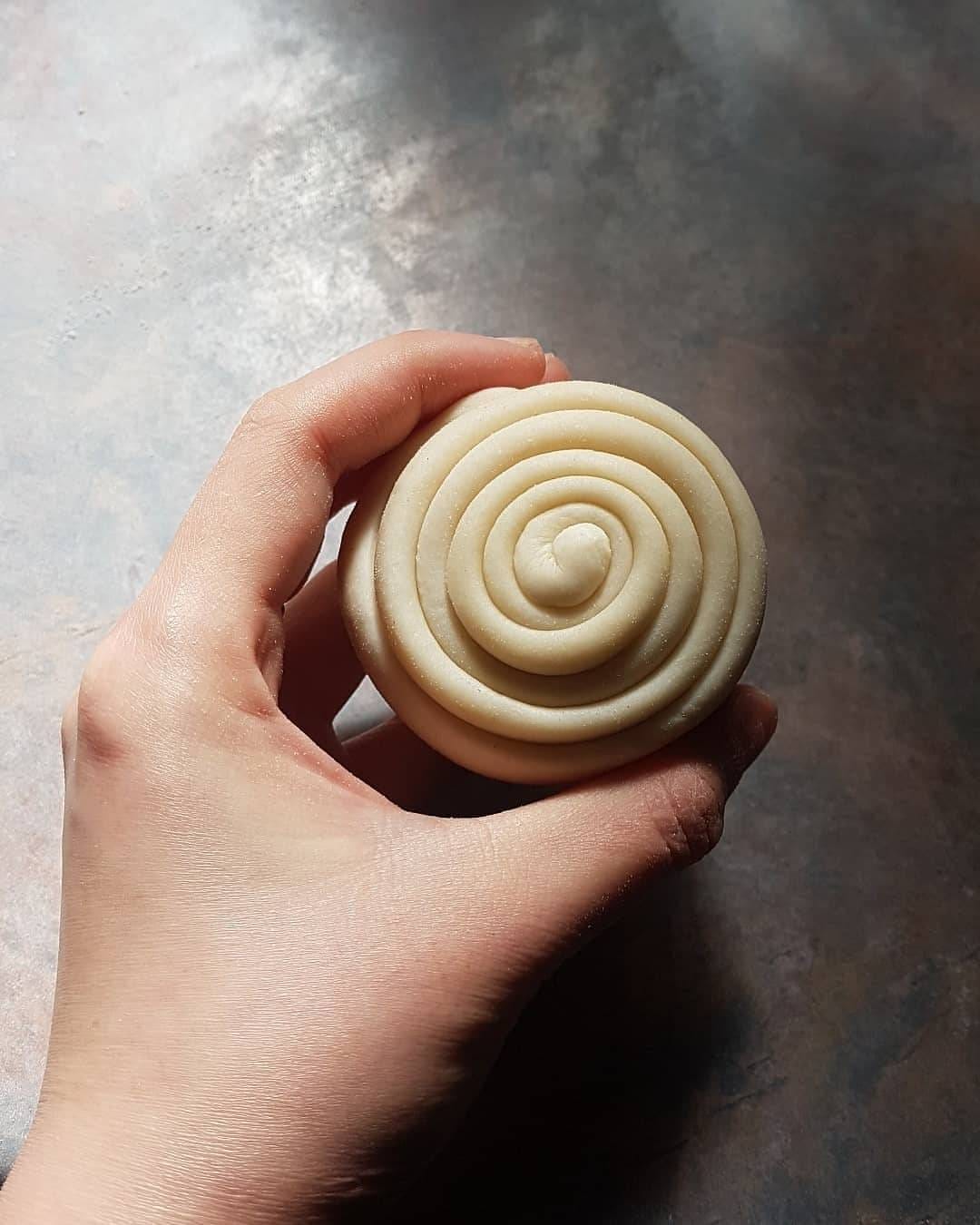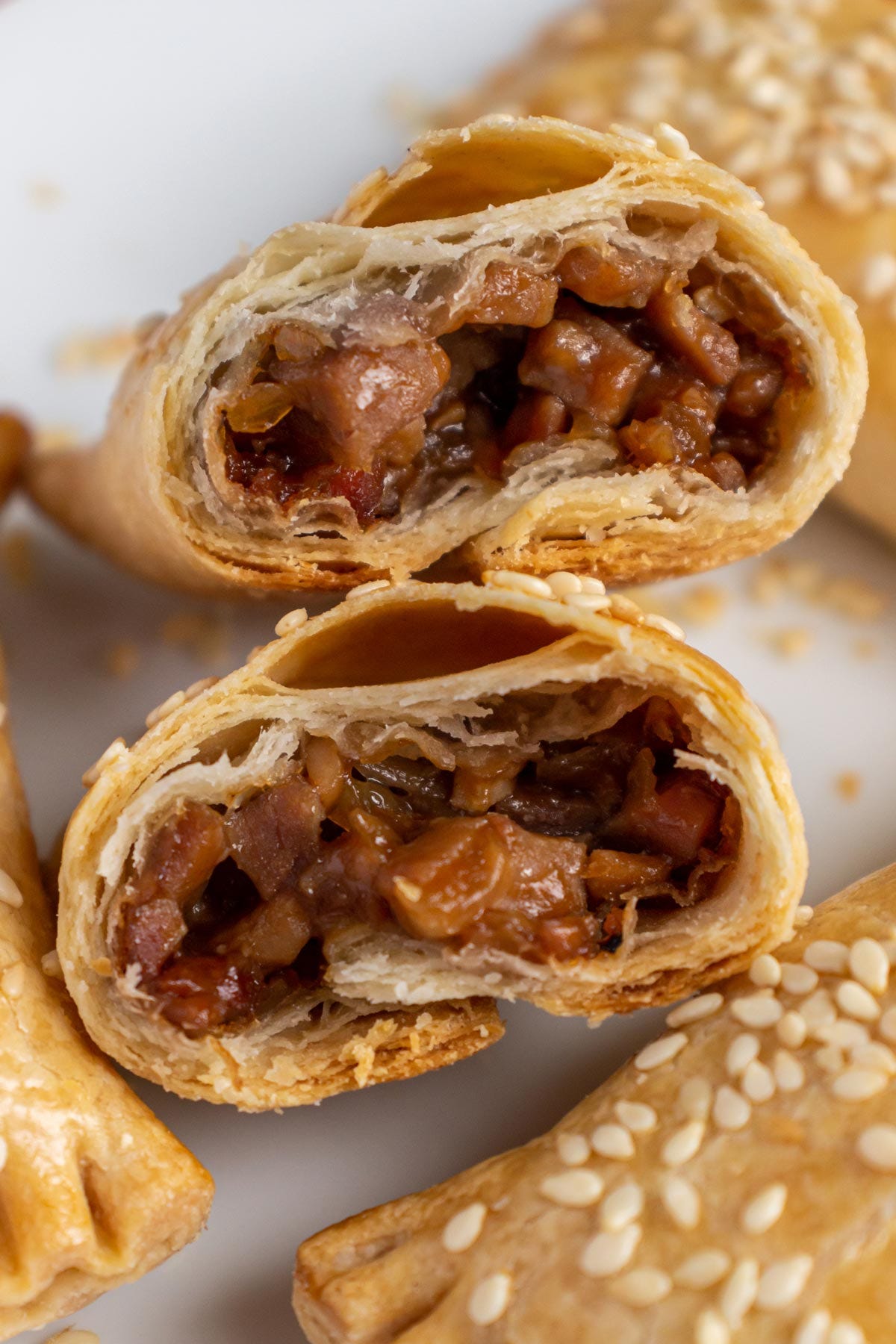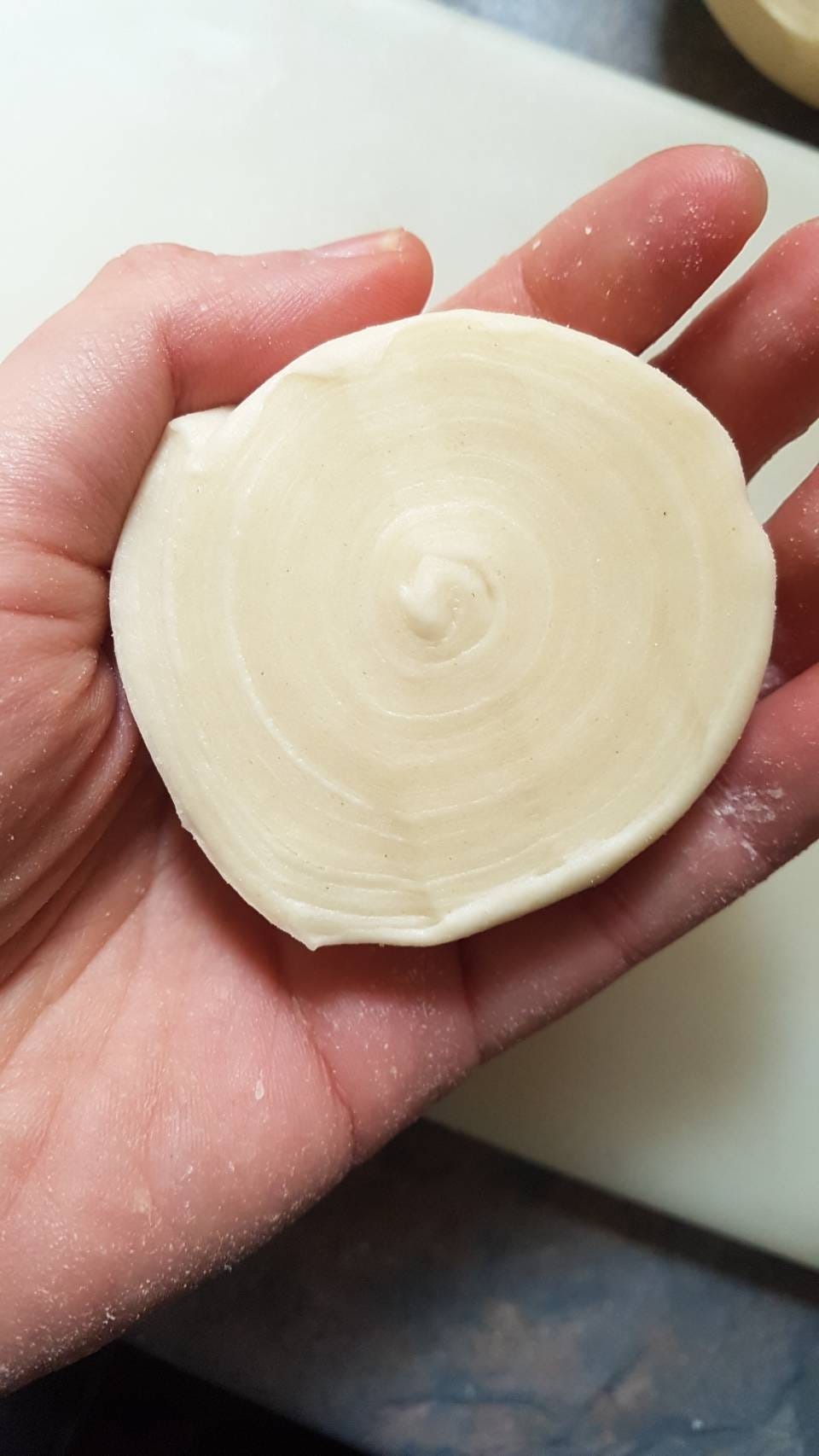I used to be obsessed with making European-style puff pastry, croissant, rough puff. Anything to do with lamination. I was fascinated by the cross section that revealed pockets of air and well-defined layers, and loved the flaky mess when you took a bite. It was really fussy to work with though - to get really great results, you had to ensure that the butter was not too hot or it would melt through the pastry, and in tropical weather, this meant shuttling the dough back and forth between the fridge and the counter.
When I first discovered Chinese puff pastry while developing a curry puff recipe, it was a huge revelation. Not only did it work regardless of weather conditions, it did not require resting and could be baked off or fried instantly.
The uses of Chinese puff pastry are myriad. There’s char siu sou that I love to order at dim sum restaurants, Teochew mooncakes, siu bao (a popular Malaysian baked char siu pastry that is shaped like a bao), Portuguese egg tarts… even curry puffs.
One of the most famous ‘spiral’ curry puffs in Singapore is by Wang Wang Crispy Curry Puff at Old Airport Road. The story goes that the founder of Wang Wang learnt to make Teochew mooncakes while working as a chef at a Chinese restaurant, and starting incorporating this Chinese pastry lamination technique into the curry puffs he sold (recipe for flaky curry puff below).
While European puff pastry or croissant pastry involves the layering of a water-based dough with a block of butter, Chinese pastry encases an oil-based dough within a water dough. It is rolled out thinly, then rolled up during the lamination process.
Depending on how you cut the dough, you can get different visual results. When the scroll is simply rolled out and used just like a sheet of puff pastry, you get something like this char siu sou, where the layers are concealed until you slice into the pastry (much like how the West uses puff pastry). This is known as 暗酥 (‘hidden’ pastry):
If you cut the scroll in half, cross wise, you’d expose the layers, like in Teochew mooncakes or curry puffs. This is known as 圓酥 (‘round’ or ‘spiral’ pastry):
If the scroll is sliced lengthwise, you also expose the layers, but the baked pastry would have layers that look like they are running in parallel. This is known as 直酥 (parallel pastry). This is used for some dim sum items, such as durian puffs:
This pastry works well both deep-fried or baked, for savoury or sweet fillings, and so it is super versatile and a handy one to learn. Made Teochew mooncakes with this pastry this week, and the contrast between the shatteringly crisp exterior, the smooth orh nee filling, and the crumbly salted egg yolk was bomb!!
Teochew mooncake
Makes 8




